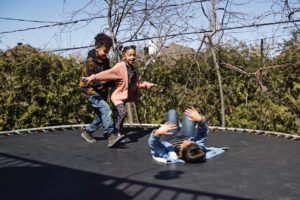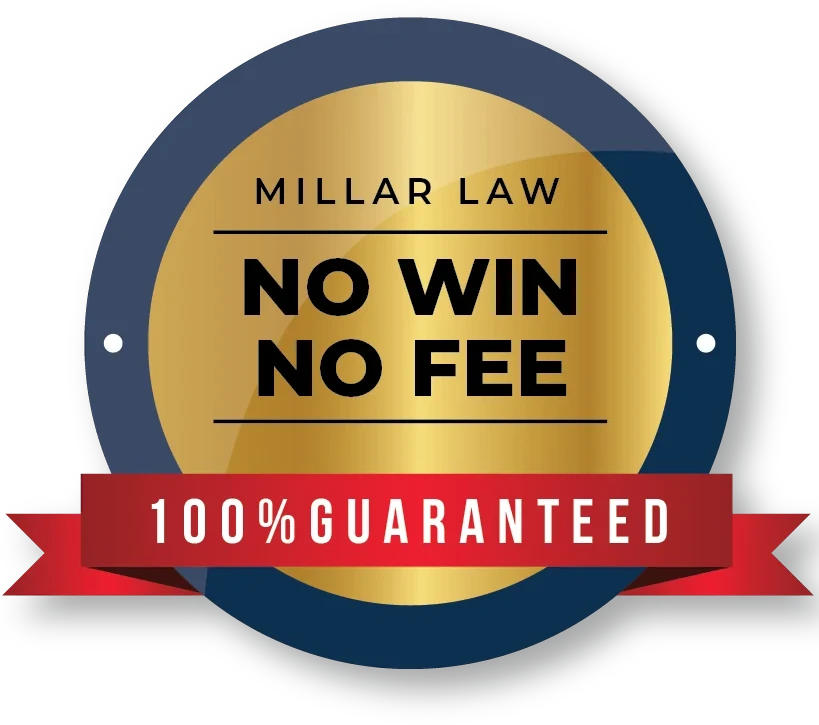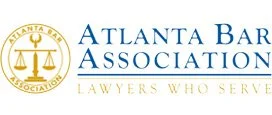Can You Receive Compensation for a Trampoline Injury in Georgia?
Key Points:
- Although a fun pastime, trampolines can lead to serious injuries for children, teenagers and adults.
- If an injury victim has health insurance, medical insurance will typically pay for the care. However, if the injury resulted from negligence, medical bills may be paid or reimbursed by the homeowner or their insurance company.
- In Georgia, homeowners insurance policies will typically cover personal injury – and may cover a trampoline injury, unless specifically excluded.
- If an injury took place at a trampoline park, it may be more complicated or difficult to receive compensation from the park or its insurance company because customers are usually required to sign a waiver of liability.
- There may be certain exceptions to the liability waiver in a trampoline park, such as equipment failure or if the injury is caused by the negligence of another customer.
- A personal injury lawyer can investigate whether actionable negligence occurred and pursue all available coverage from the homeowner, the business and their insurance company to ensure all expenses are covered and that the claim moves forward smoothly.
Table of Contents
There are few things in life that can deliver nostalgic joy the way bouncing on a trampoline can. As a kid, you either had a trampoline or really wanted one. And whoever had a big trampoline in the neighborhood was usually the envy of all the kids.
Although fun, trampoline injuries often occur in neighborhoods in the state of Georgia and around the country. In fact, the American Academy of Pediatrics strongly discourages trampoline use at home.
While modern trampolines have become safer with added netting and improved designs, injuries do still happen. Unfortunately, even the enhanced safety measures aren't enough to prevent all accidents and crash landings.
Common Injuries Children and Teens Experience From Trampolines
It's possible to be injured in almost limitless ways on a trampoline, but the following injuries are the most common in children and teens:
- Broken bones
- Upper extremity broken bones: This can include arms, hands, fingers, shoulders, and facial injuries.
- Lower extremity broken bones: This can include legs, feet, toes, ankles, and hip injuries.
- Axial skeleton injuries
- Spine
- Head – Traumatic brain injuries (TBI)
- Ribs
- Sternum
- Head injuries
- Traumatic Brain Injuries
- Paralysis
- Permanent neurological damage
According to one study, more than 1 million people went to the emergency room for trampoline injuries over a 10-year period. The total emergency room expenses for these trampoline injuries were over $1 billion, with more than $400 million specifically because of broken bones.
Where Trampoline Injuries Take Place
Residential Communities
Most trampolines are still found at private residences, which is where most of these injuries occur. Children and teens are often injured while jumping on a neighbor's or friend's backyard trampoline.
While trampoline parks have become popular attractions in recent years, you usually have to sign a detailed waiver against liability to enter and use the facilities. Local cities typically will not risk the liability of putting in a trampoline park, so these types of attractions are most often privately owned.
Trampoline Parks
Trampoline parks are becoming more popular in Georgia. They are popping up in cities all around Atlanta. Children and teenagers are commonly injured at trampoline parks.
Why it Can be Difficult to Collect Compensation from a Trampoline Park - And How You May Be Able to Do so.
Trampoline parks know that what they offer is likely to injure a customer. The risk is very high, and they don't take chances. If they were or could be sued for each injury, they would not be in business.
To protect themselves, trampoline parks typically have all customers sign a waiver. The waiver is usually written such that the customer acknowledges that he or she has assumed the risk of injury, making it difficult to bring a claim against the park.
There are some exceptions. For instance if the equipment breaks or malfunctions as a result of the operators' negligence (such as failure to inspect and maintain a trampoline), and this negligence resulted in a customer getting injured, then a legal claim may be possible. In other instances, a customer may have a claim against another customer if the injury was caused by a negligent act such as falling onto or colliding with another patron. Claims against fellow customers may be covered against the family's homeowners' insurance.
Understanding Georgia's Negligence Standards in Trampoline Injury Cases

Trampoline injury cases are generally brought as a claim of negligence, and injuries resulting from ordinary use may not be actionable. Trampoline injuries may be covered by a homeowners' liability insurance policy, if an act of negligence by the homeowner or their family occurs, and if the victim did not assume the specific risk of injury.
Trampoline play and jumping easily lends itself to horseplay, which can be the main cause of injuries. If an injury resulted from young children not being properly supervised, the adult chaperones or homeowner may bear some responsibility for an injury. However, children or adults who are old enough to understand and assume the risk of injury may be barred from recovering for an injury due to horseplay or a simple mistake, such as landing incorrectly or falling off a trampoline.
Homeowner's Insurance Companies May Seek to Avoid or Paying for Trampoline Injuries
While a victim's health insurance policy typically covers injuries regardless of fault, a homeowner or their liability Insurance Policy does not automatically pay healthcare and other costs and expenses.
The liability insurance company will usually not pay health care costs if they believe the victim or another party they do not insure is responsible for the injury. Therefore, it is usually necessary for a victim to receive and pay for medical care on their own while a claim is investigated and fault decided. Injury victims may have their medical bills initially paid for by their own medical insurance policy, out of pocket, or on a lien while the victim and their lawyer pursue a claim for recovery of those expenses from the negligent person or company.
Some of the most common medical bills include:
- Emergency room visits
- X-rays
- Professional injury evaluations
- Placing a cast
- Any hospital stays
- Follow-up doctor visits
- Physical therapy
- Chiropractor visits
Obtaining the Homeowner's or Business Property Insurance Information
Typically, you may need to approach the homeowner or business and ask for information about their liability coverage, specifically the name of the insurance carrier and a telephone number to the claims department.
A homeowner or business may offer to pay you directly for any medical bills and expenses from injuries because they do not want to notify their insurance company. Should this happen, you should carefully weigh whether to accept such an offer. Often, the negligent party will make promises to pay for medical expenses, then fail to follow through. And, most likely a negligent homeowner or business who has injured you or a family member will refuse to adequately compensate you for pain and suffering, future medical expenses, and lost income. Accepting an offer directly from the homeowner or business (unless you know with complete certainty there is no insurance) is usually a recipe for disaster.
On the other hand, homeowner's and business liability insurance is designed to be available to pay full compensation for all of your injuries (insurance limits must be considered), without the hassle of going back to your neighbor and asking to be paid directly or in full.
Contacting a personal injury lawyer is often the best move, because a competent Atlanta law firm will discover and contact the property insurance company and ensure that a claim is established.

 1201 West Peachtree Street #2339 Atlanta, GA 30309+1-770-212-3795$0-$100000
1201 West Peachtree Street #2339 Atlanta, GA 30309+1-770-212-3795$0-$100000Thank you, Millar Firm for your sponsorship of a family during 2021 Christmas Holidays. In addition, thank you for your donation for Level Up Cycling Club “1st Annual Ride For The Cause/Community Resource Fair”.

When Does Homeowner’s Insurance Cover and Pay Compensation for Trampoline Injuries?
A homeowner who owns the trampoline will usually have homeowner's coverage or a personal umbrella policy (PUP) with their property insurance company. Whether the policy covers trampoline injuries may depend on whether the policy specifically excludes trampoline ownership and use, or whether the homeowner was required to disclose trampoline ownership and did, or failed to, notify the carrier that he or she owns a trampoline.
If the homeowner’s insurance policies specifically exclude trampoline-related injuries, the costs will fall directly upon the negligent homeowner, business or other individual to pay for the damages personally.
How Can a Personal Injury Lawyer Help with a Trampoline Injury?
An experienced personal injury lawyer can assist with a trampoline injury claim in several ways, for example:
- If the trampoline owner refuses to give any information about their homeowner’s insurance, a lawyer may often be able to get the necessary information and details. A personal injury lawyer will make sure your claim is filed with proper insurance company and that it continues forward smoothly.
- If the homeowner’s insurance company denies a trampoline injury claim, a lawyer may work to establish that the insured party is, indeed, at-fault and that their insurance company must pay the victim a settlement or verdict.
- Even if an insurance company accepts liability and agrees to pay for a trampoline injury, insurers are notorious for refusing to accept all past and future expenses or pay full compensation for pain and suffering. A personal injury lawyer can help ensure that you receive and recover full compensation, or as much as the law allows.
This is just a partial list of how an experienced Atlanta personal injury lawyer can help with a trampoline injury. Each case and its circumstances are unique; because of this, we recommend that all injury cases be evaluated by a qualified attorney.
How Can a Property Owner Protect Themselves from a Trampoline Injury Lawsuit?
Make Sure You Have Enough Homeowners' / Property Insurance Coverage
Apart from making sure that your trampoline is properly maintained, locked away behind a fence, and that any children using it are properly supervised, make sure your insurance does not exclude trampolines and has high-enough policy limits. Several hundred thousand dollars to over one-million in coverage is generally recommended by most insurance professionals. Additionally, a personal umbrella insurance of at least $1,000,000 in liability protection which can also help protect both your home and financial assets.
Buying a Trampoline With Attached Safety Fencing
Trampoline injuries are often caused by children and adults falling off of the trampoline and hitting the ground. Trampolines are available with nets and guards surrounding them ("fencing") designed to help prevent falls off of the trampoline onto the ground.
Keep the Trampoline at Ground Level
Its becoming more popular to create a hole in your backyard, and then keeping the trampoline at ground level, rather than having the trampoline be up on poles. This may also help prevent or reduce injuries.
Can a Signed Waiver Protect a Homeowner from a Trampoline Injury Lawsuit?
Possibly, but not always. A well written waiver may potentially protect a homeowner against certain trampoline injury claims or lawsuits. It is recommended that any waiver for a child be recently signed by a parent or adult guardian.
Waivers, however, do not always protect homeowners from liability. A waiver may not be valid in your state, or may not apply to all circumstances, such as risks that are not obvious to the users.















